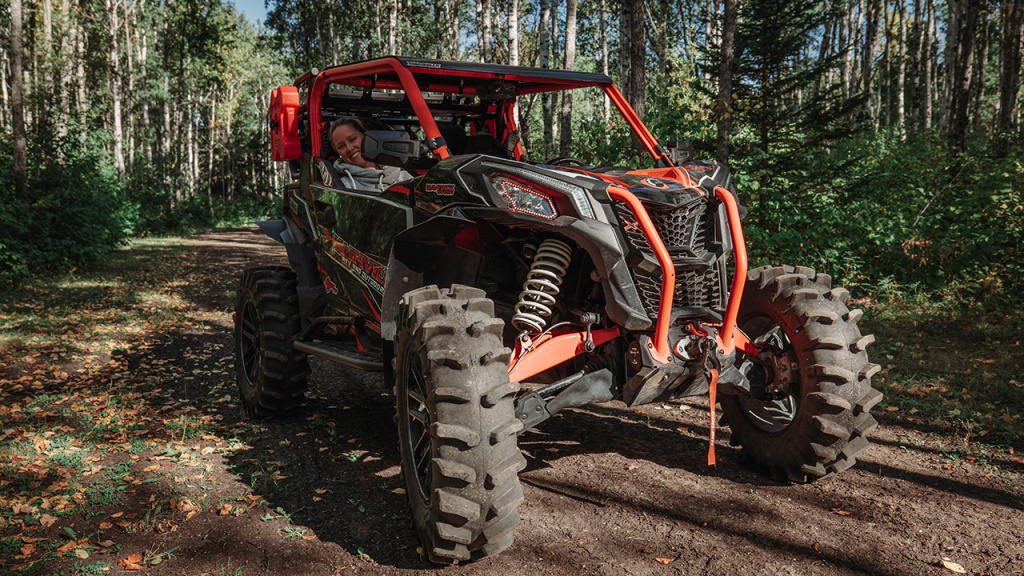How To Adjust UTV Shocks
Many riders don’t touch their shocks, but these riders are missing out. When you adjust UTV shocks, you improve the feel of your ride, your traction, and your control over the machine. Yes, it seems difficult, but it’s not as difficult as it seems if you understand what you’re doing. Let’s explore how to adjust shocks on a side by side.

Specifics
Shocks are fairly similar on all quads. The principles remain the same. Individual machines can differ, though. Some offer only one tuning option while others give you multiple. As with any repair or adjustments, you should always read your owner’s manual for the specifics on your machine.
Understanding Shocks
Your shocks are made up of springs and shock absorbers.
When bumps in the trail make your wheels go up, the springs compress with the impact and then extend, holding your tires to the ground so they can offer you the traction, control, and acceleration you expect.
The shock absorbers keep you from feeling each up and down motion with the bump. They are oil-filled tubes with valves and pistons inside them. The valves control how much oil can move through the piston, which keeps your springs in check.
How to Adjust UTV shocks
Tires
Before you tinker with your shocks, make sure your tires have right and equal pressure. If the tires aren’t right, the shocks can’t be right.
Preload/Right Height
Your shocks should have either a threaded collar or a snail cam. If you tighten these, you will raise your ride height and your ride will be stiffer. If you loosen it, you’ll have a lower ride height and a softer ride. Right tightens, and left loosens. Go lower and tweak until you find the height that feels good. There are four ride height controllers, and you want to adjust all of them so you’re level.
Compression
Your shock absorbers have adjusters that determine how fast they move, and how fast the oil inside them moves. The tighter they are, the more control they’ll offer.
Most of the time, turning the adjusters clockwise tightens them and turning them counterclockwise loosens them. This is slightly more complicated than just tightening or loosening. To know which one you need or whether you need to adjust them at all, you need to consider your riding style and where you’re having riding issues. If you ride at faster speeds, you’ll want tighter compression. If you ride at slower speeds, say for farm work and hauling, you’ll want looser compression.
Your shocks may differ in how you adjust the speed. Some have a knob and screw, some are electrical and you will control them through the dashboard, and some have a few settings for you to choose from.
Rebound
Rebound refers to the bounce in your vehicle when you hit a bump. One bounce is fine. Your UTV goes up and then lands right back down level and keeps trucking. When your rebound is off, your UTV might bounce multiple times, particularly in either the front or the back.
Some shocks don’t have rebound adjusters. If yours does, you adjust it the same way as when you manually adjust compression. Right makes it tighter, and left makes it looser.
Crossover Adjustment
If your UTV has a multi-spring setup, you will have different springs for progressive spring control. The larger spring will be the stiffest while the smaller ones are different looser settings. If you need to adjust these, you will be adjusting when bumps are handled by one spring or the other.
Make it Even
Whatever changes you make on one corner of your UTV, be sure to set each side evenly. Otherwise, your machine won’t handle evenly or stay level. Some adjustments can be different in the front and the back, but the front corners and the back corners must always be the same.
Testing
The final step is to test drive your UTV with its adjustments. Take it out and do all of the things you normally like to do when you ride so you can see how it handles. Do a jump to test the rebound. If it bounces more than once on landing, your rebound needs to be tighter. If your adjustments are too tight and your suspension doesn’t spring back fast enough, your UTV will be riding too close to the ground. Adjustment is mostly about your riding style and your comfort. Your UTV is adjusted correctly when you can ride wherever and however you ride comfortably and with good traction and control. So see what she does while you’re driving. If it’s not right, and it probably won’t be, go back and tinker some more and then test her again using the knowledge we’ve given you about how to adjust your shocks.







































